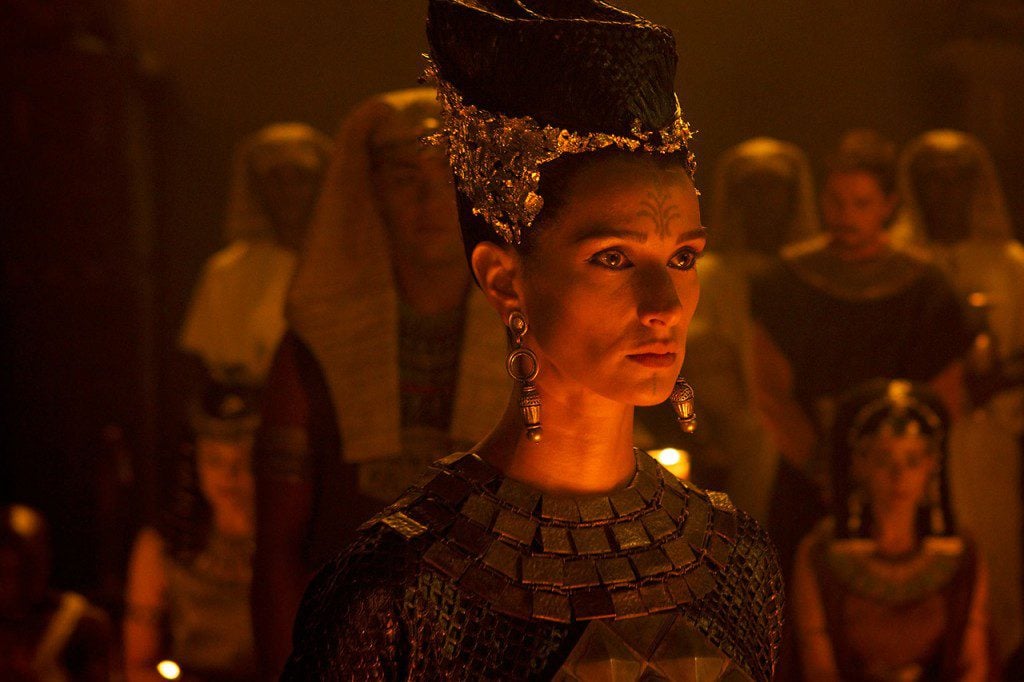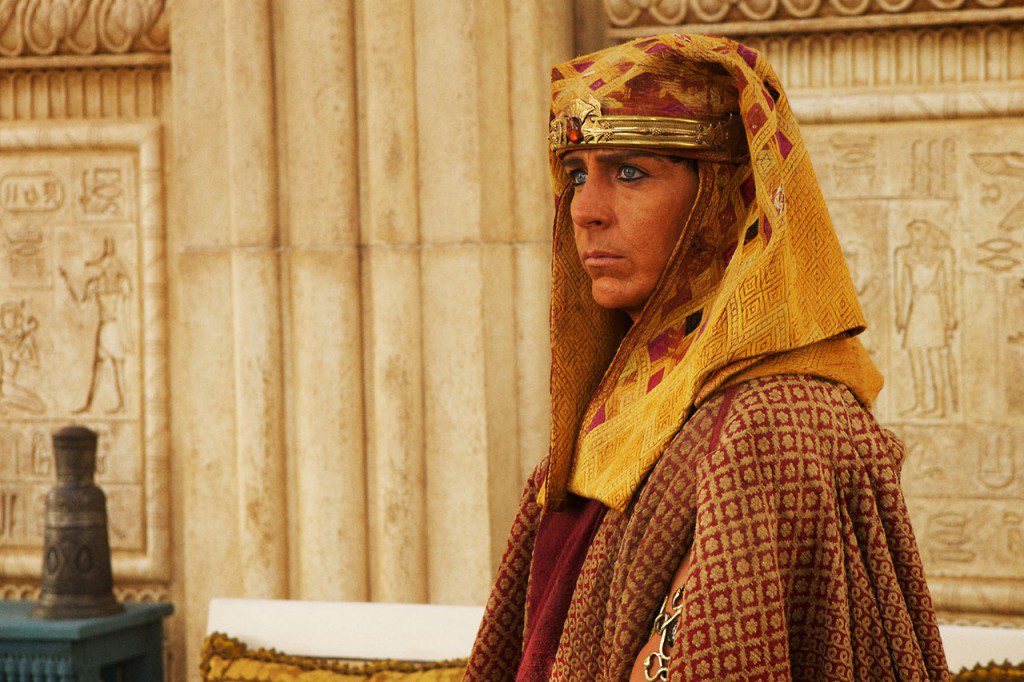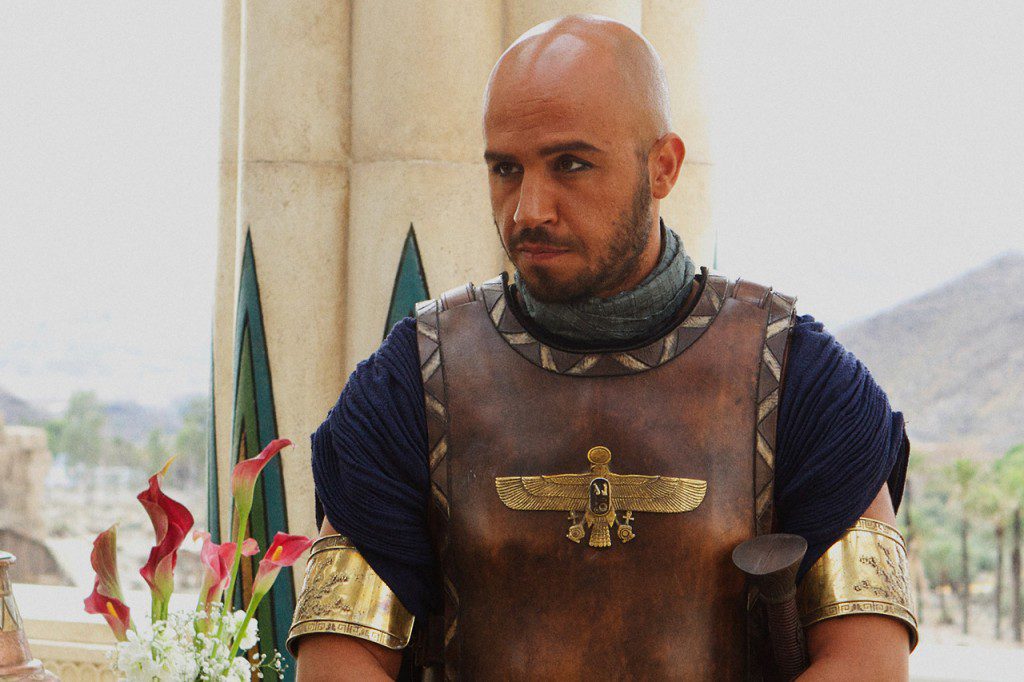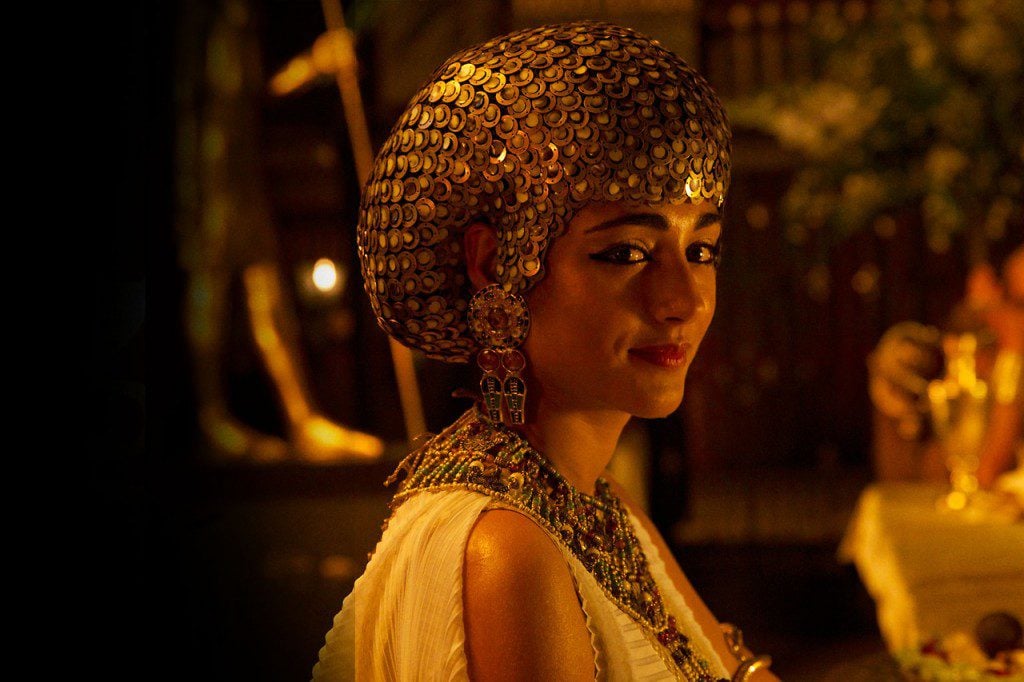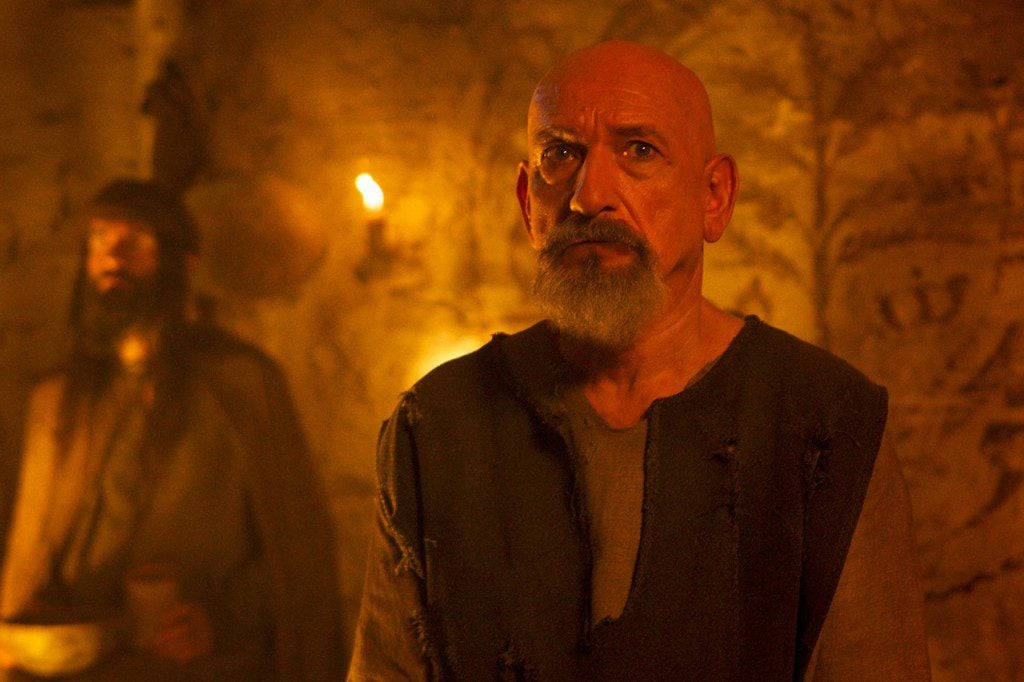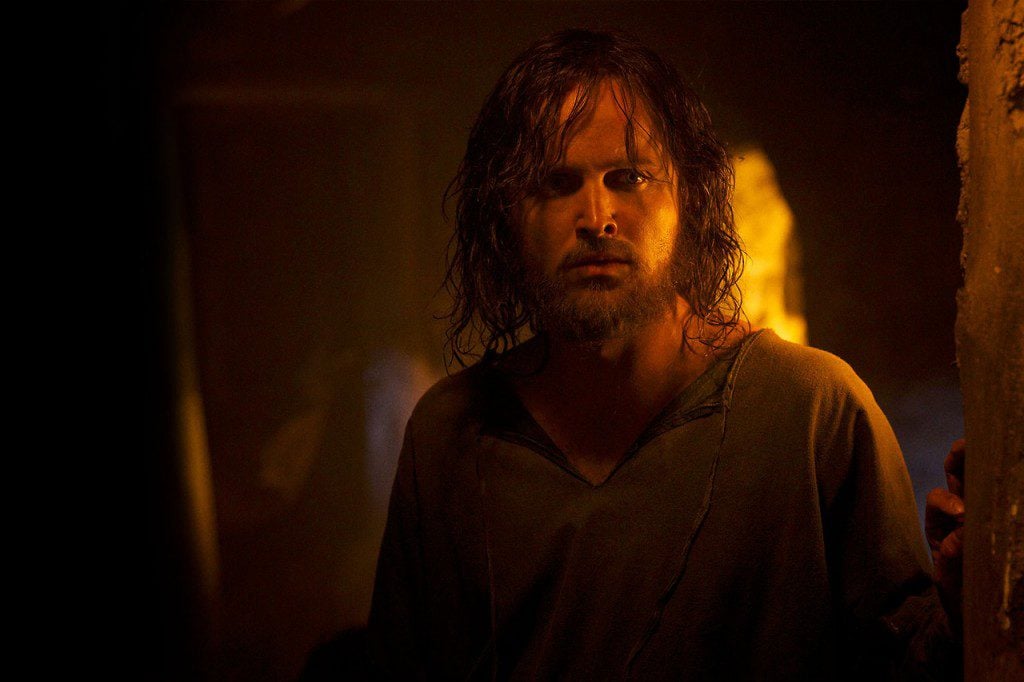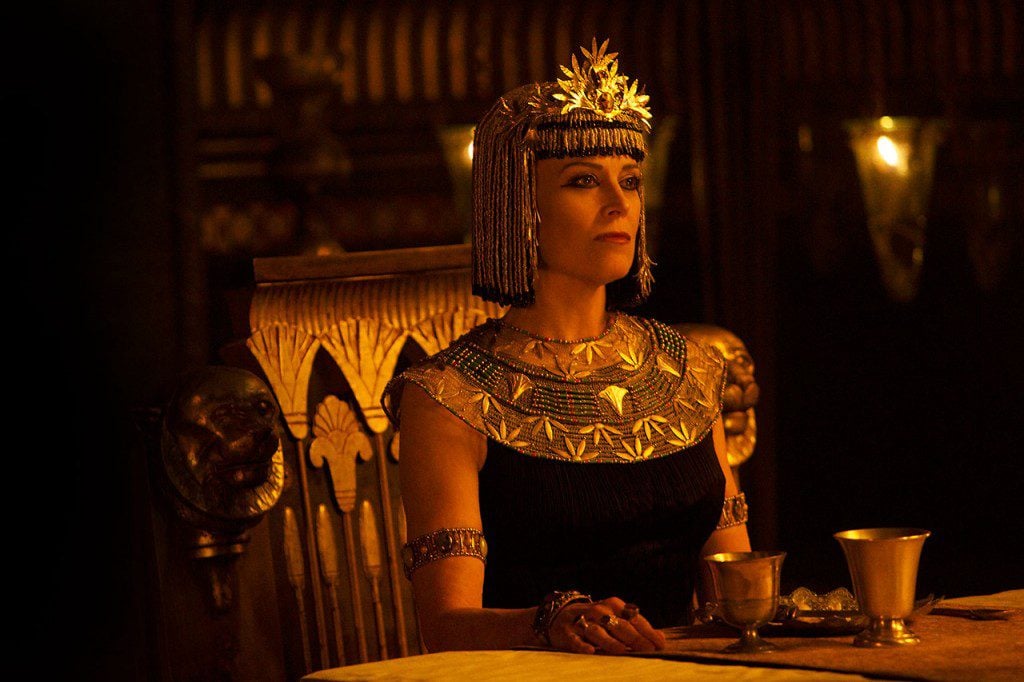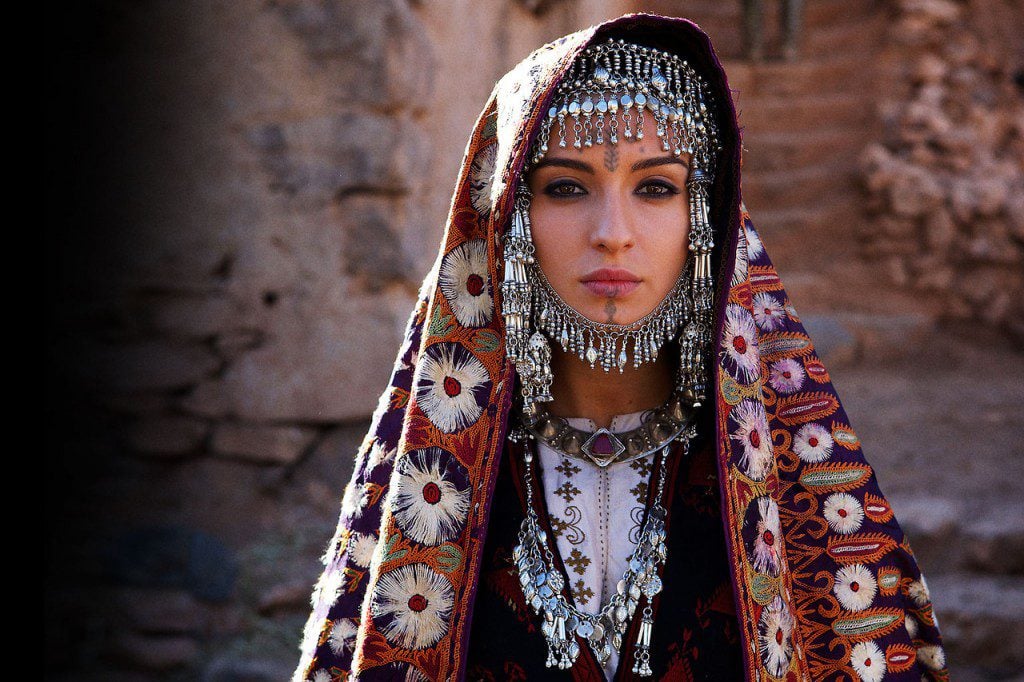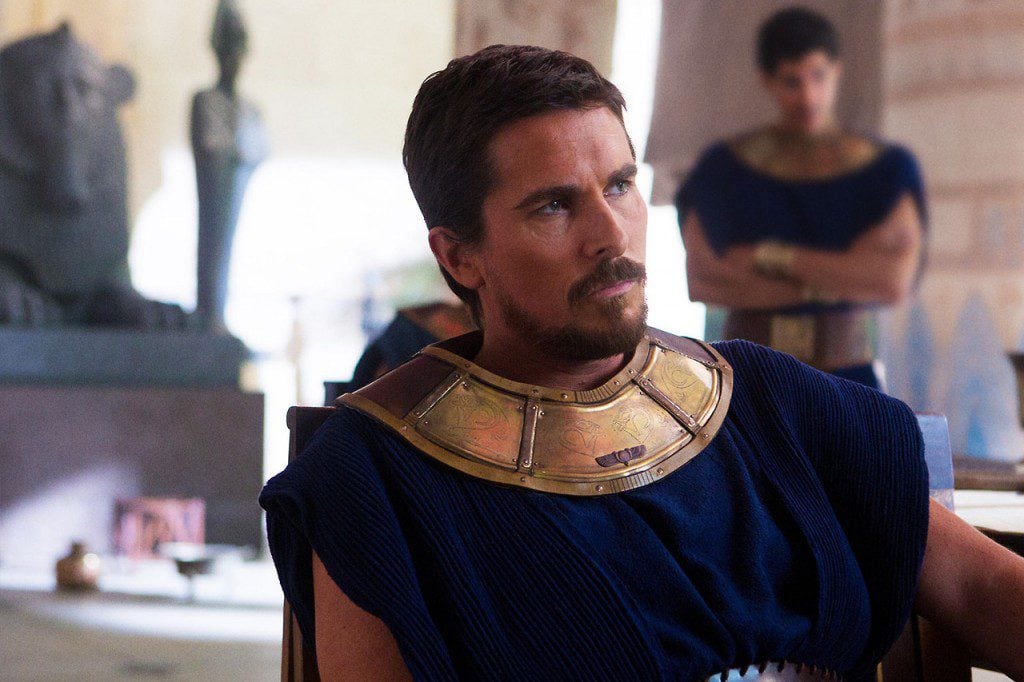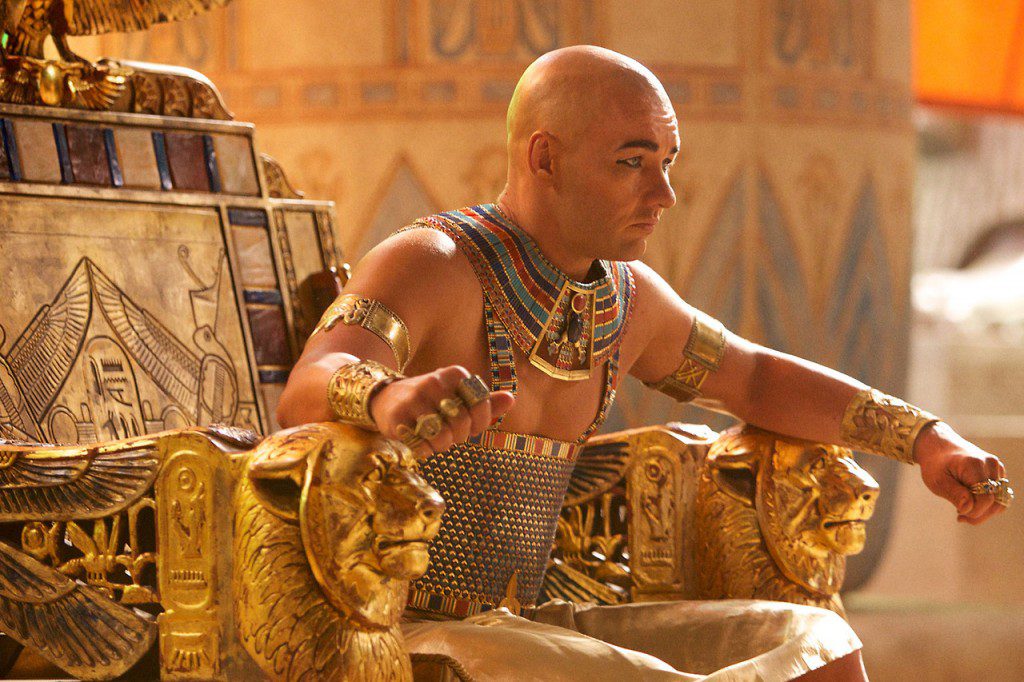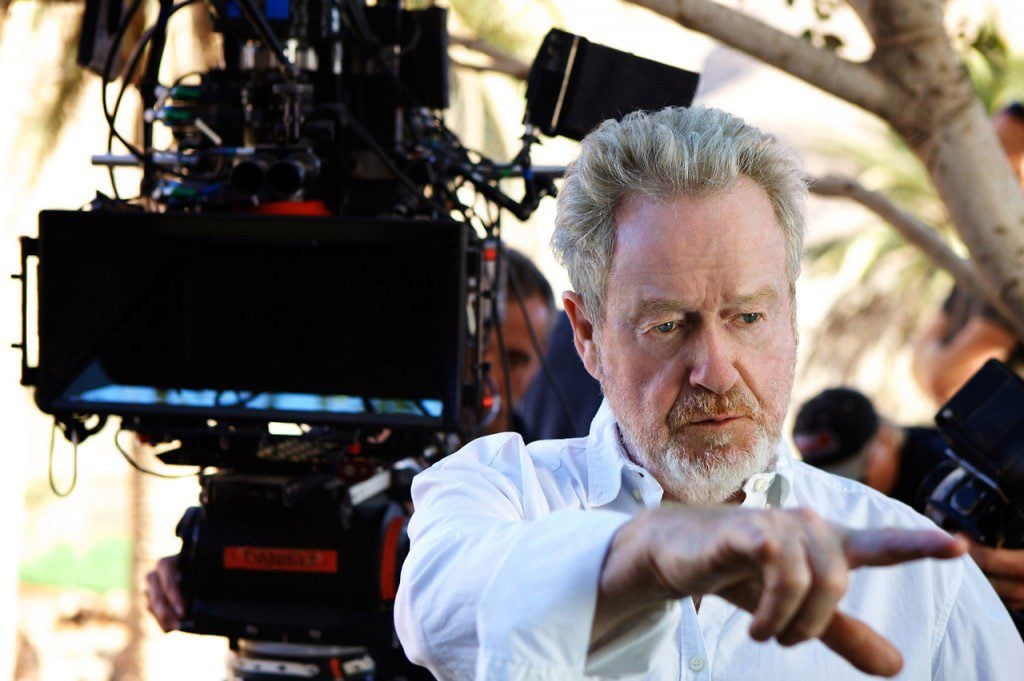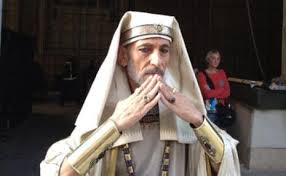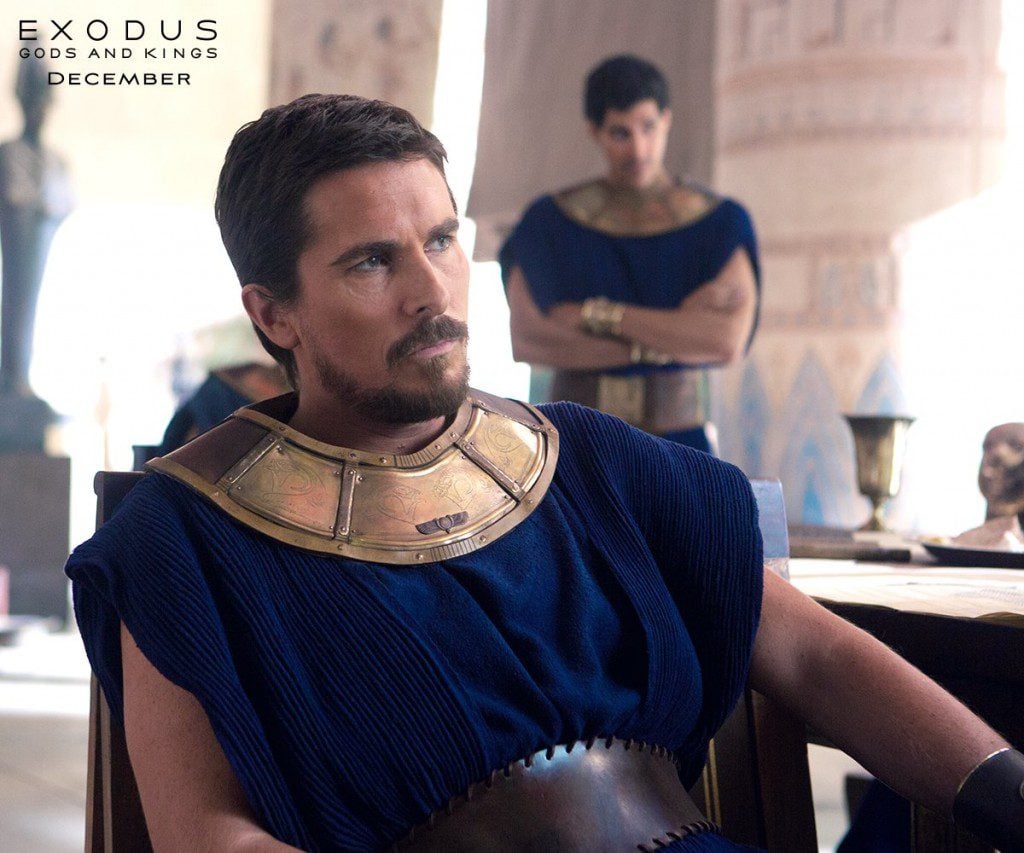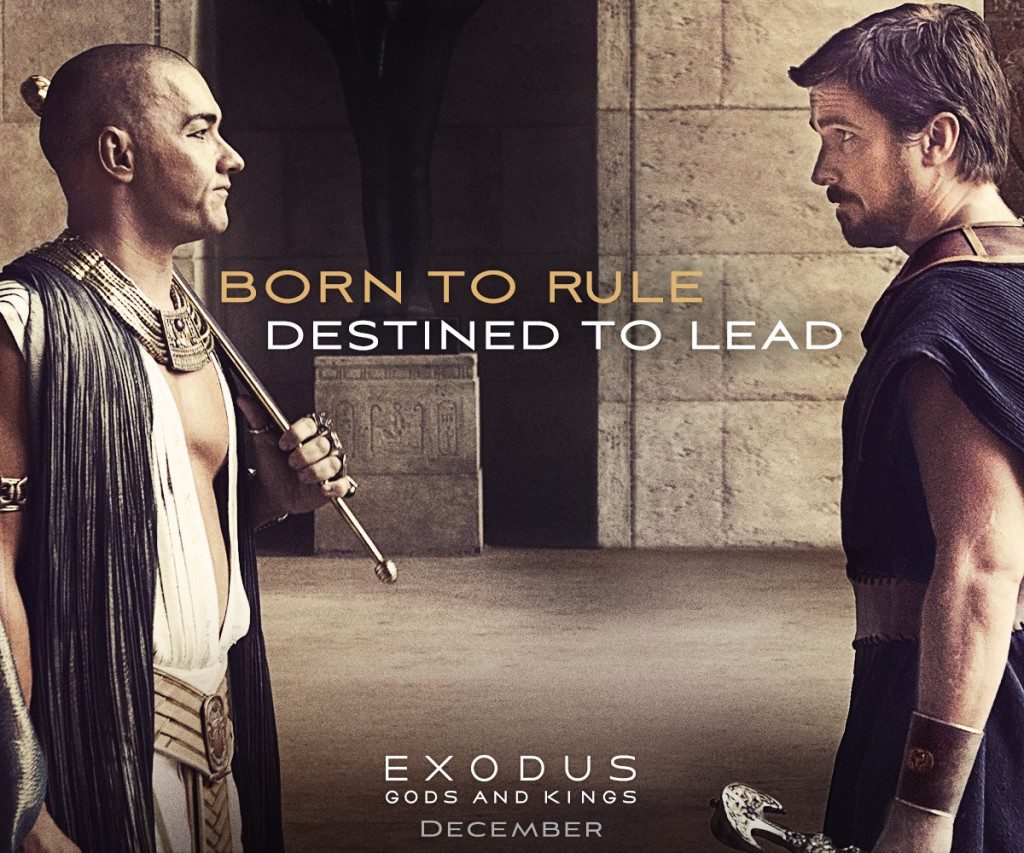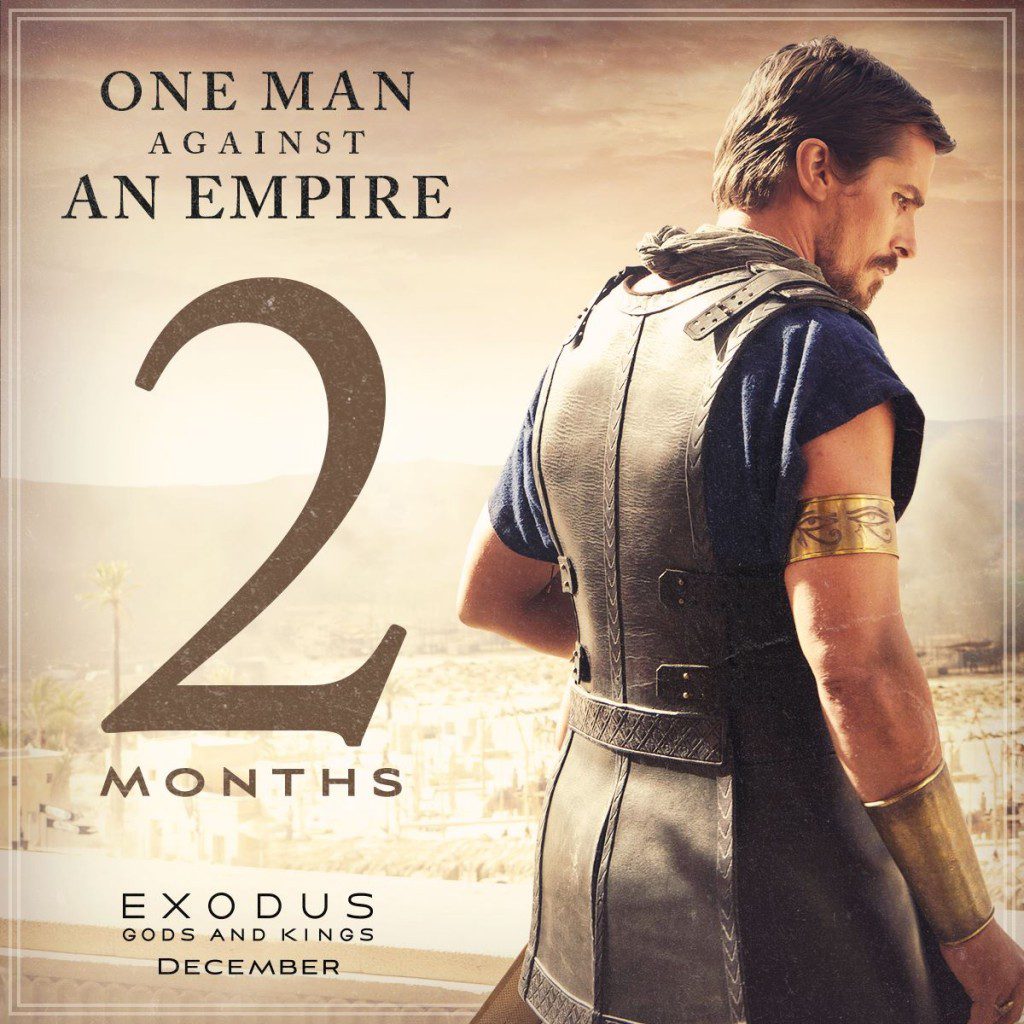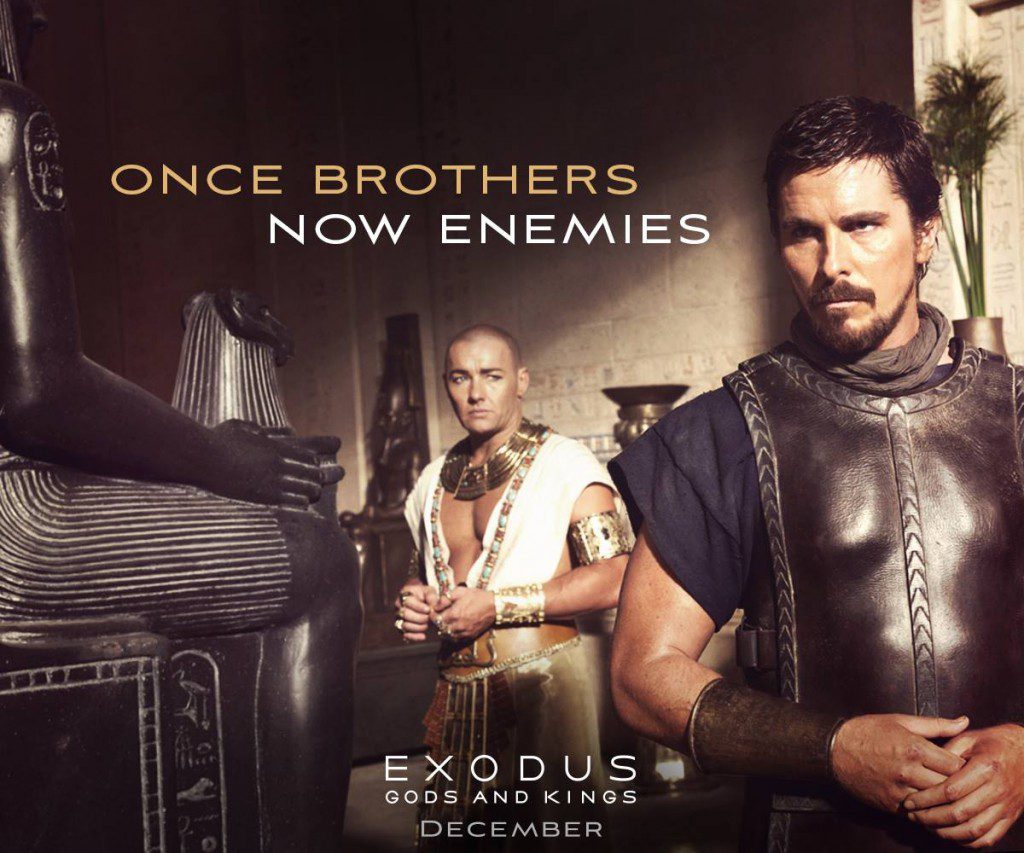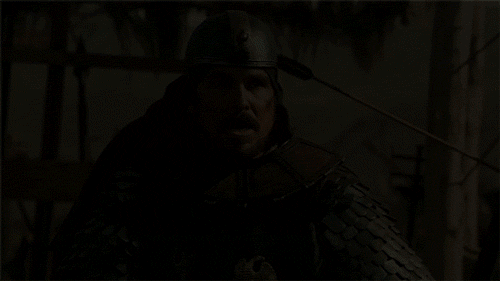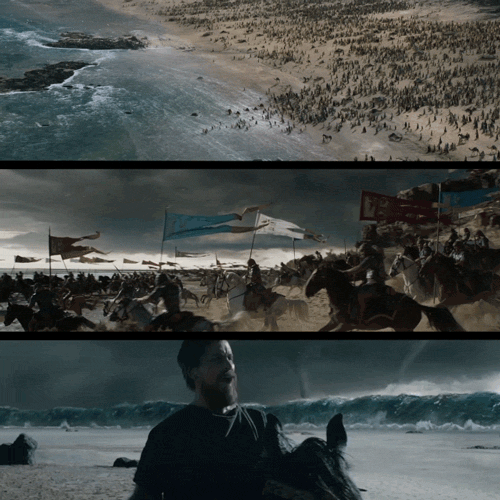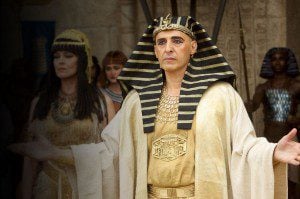 The publicity campaign for Exodus: Gods and Kings is stepping up, just a month and a half before the film opens overseas (click here for the release dates).
The publicity campaign for Exodus: Gods and Kings is stepping up, just a month and a half before the film opens overseas (click here for the release dates).
20th Century Fox, which already screened about half-an-hour of footage for the media two weeks ago, screened even more footage for reporters in New York and Los Angeles yesterday, and plans to do the same in Washington DC next week. The footage may have also screened in Toronto, to go by a report that appeared in the Toronto Sun on Wednesday.
Various details have leaked out from those screenings, and the studio has added to the new information by releasing some new pictures, including photos of actors we had not yet seen in any of the official press materials. Check ’em out below the jump.
By far the most detailed reports on the footage that I’ve seen so far are the ones posted by io9, Coming Soon and We Got This Covered. Among their revelations:
- The Egyptian princess Bithiah adopted not just Moses, but his “sister” as well, and then “lied about their sibling relation”. It seems that Bithiah adopted Miriam, or took her in as a servant, and told everyone Miriam wasn’t Moses’ sister.
- Moses and Ramses grew up as “cousins” — which makes sense, if Bithiah is sister to the Pharaoh Seti and both she and Seti are the offspring of the previous Pharaoh, who would have ordered the death of the Hebrew newborns.
- Even though Ramses is Seti’s son, and even though Ramses seems to be close to Moses (as he was in The Prince of Egypt), Seti “still prefers Moses” (just as he did in The Ten Commandments). This supports my theory that one of the reasons Seti will die earlier in this movie than he does in most Moses movies is because his wife Tuya, who reportedly has ambitions for Ramses, bumps off her husband somehow (similar to how Commodus killed Marcus Aurelius, when he discovered his father was going to make Maximus the new emperor, in Gladiator).
- The opening battle with the Hittites is preceded by a visit to an oracle — possibly the Egyptian high priestess — who kills a chicken, studies its blood, and declares that “a leader will be saved and his savior will become leader”.
- Moses saves Ramses’ life during the battle sequence, thus fulfilling the first half of the prophecy — and stoking Ramses’ paranoia about the second half.
- Moses confronts Hegep, a “librarian or banker” played by Ben Mendelsohn, about his excessively luxurious lifestyle, and Hegep “seems to make a sexual pass at Moses to try to keep him from taking away his accumulated wealth.”
- A slave — Joshua? — is smiling when Moses sees the taskmaster whipping him.
- Moses interrogates Joshua’s father Nun regarding rumours that the Hebrews may be planning some sort of “uprising”. Moses and Nun discuss the concept of God, and Moses says he doesn’t believe in any higher powers.
- Ramses’ spies overhear the pivotal meeting between Moses and Nun, in which Nun reveals Moses’ true origins. When word gets back to Ramses, he threatens to cut off Miriam’s hand if she keeps denying she is Moses’ sister.
- Moses is exiled from Egypt, apparently by Ramses, just as he was in The Ten Commandments. It is not clear whether Moses will kill an Egyptian taskmaster first, which is the reason the Bible gives for why Moses fled into the desert.
- Bithiah addresses Moses by the Hebrew version of his name, Moshe.
- The high priestess is confident that she can cleanse the Nile after it turns to blood, but it turns out she can’t. This is an interesting difference from the biblical account, where a couple of male magicians replicated the transformation of water to blood, to show that their gods were just as powerful as Moses’ God.
- The plagues look “really, really gross.”
- Ramses sends assassins to kill Moses’ family. This, too, parallels an element in The Ten Commandments, where it is Ramses’ idea to kill all the Hebrew firstborn children — including Moses’ own son — and this becomes the basis for God’s decision to kill all the Egyptian firstborn in the tenth and final plague.
- When Ramses and his chariots go in pursuit of the newly freed Hebrews, a large number of his charioteers are killed by an avalanche.
- Ramses is “batshit crazy” for much of the film, while Moses, after he becomes a prophet, “has a huge beard and the look of an insane person.”
The Christian Post adds one other interesting detail:
- Moses urges Ramses to “accept God before his firstborn child is killed and Egypt is destroyed.” Does Moses try to convert Ramses to the Hebrew faith, then?
Regarding the “sexual pass” that Hegep makes, Vulture reported two weeks ago:
I noticed, too, that the more eyeliner a character wore, the more fey and villainous they were telegraphed to be. It’s set in Egypt, and everyone is dressed pretty eccentrically — “These are people who lived as gods, and therefore there is a reputation to uphold and a beauty to convey,” said Bale — but Edgerton’s glittery go-go god is a coward in battle, and Ben Mendelsohn’s venal character, clad in the most eye makeup out of anyone, comes onto Bale the first chance he gets. “Have I displeased you?” he minces. “And if so, is there any way I could please you?” Cue the downward glance.
Fey villains are nothing new in Ridley Scott films, alas. See, for example, the Knights Templar in Kingdom of Heaven, especially the one played by Marton Csokas.
Meanwhile, the Italian website Bad Taste has posted a few new items from their visit to the movie’s set, including interviews with production designer Arthur Max, who makes this interesting comment (as translated by Google):
We were also in a gold mine, a cave that serves as a base camp hidden Moses when he begins to do this sort of guerilla against the Egyptians.
Is this “guerrilla” campaign tied to the flaming arrows we saw in the recent trailer?
Bad Taste has also posted interviews with Aaron Paul, who plays Joshua (and who refuses to disclose whether the film will show Joshua arriving in the Promised Land), and costume designer Janty Yates (who says the Hittite armour was inspired by Mongolian and samurai armour to distinguish it from the Egyptian armour, which historically would have looked very similar; she also repeats Ridley Scott’s odd error of saying the film takes place in “3000 BC”, rather than 3,000 years ago).
And now for the pictures and videos.
The Tumblr page Subground of Mine posted two batches of mostly new photos today, including the picture at the top of this post, which gives us our best look yet at John Turturro as Seti (with Sigourney Weaver as Tuya behind him, to his right).
Another photo gives us our first look at Indira Varma as… well, the IMDb says she’s playing Miriam, but she doesn’t look like the Miriam whose arm Ramses almost chops off, and the movie’s official website says Varma is playing the “High Priestess” (possibly the same one that Ramses executes when she can’t stop the plagues?):
Then there’s our first look at Ben Mendelsohn as Hegep:
Plus we get our best look yet at Dar Salim as Ramses’ general Khyan:
And then there’s this picture of Golshifteh Farahani as Ramses’ wife Nefertari:
Here’s a shot of Ben Kingsley as Nun (with that anachronistic symbol behind him):
And here’s Aaron Paul as Joshua:
Here’s a picture of Sigourney Weaver as Seti’s wife (and Ramses’ mother) Tuya that we’ve seen before, but cropped differently (and somewhat oddly, I’d say):
Here’s a picture of Maria Valverde as Moses’ wife Zipporah that we’ve seen before, but cropped just a little less tightly:
Here are pictures of Christian Bale as Moses and Joel Edgerton as Ramses that resemble many pictures we have already seen, though I can’t tell at this point whether we’ve seen these exact shots before (it’s all becoming a blur…):
And here’s a shot of director Ridley Scott directing:
In addition to all these new pictures, the website PR Syria has this picture of Ghassan Massoud in costume as the Pharaohs’ adviser:
Finally, the film’s Facebook page has posted a series of photos and GIFs and ultra-brief video interviews over the past two weeks. Here’s a different version of the picture of Bale as Moses that I posted just a few images ago:
And then there are these:
The Facebook page also posted the following GIFs based on the second trailer:
The Facebook page also posted two “videos” that are really just glorified GIFs — again, using brief clips from the second trailer:
And finally, the Facebook page posted two micro-interview clips. Here are 14 seconds of Christian Bale describing how Ramses and Moses were brought up:
And here are 12 seconds of Ridley Scott praising Christian Bale:
Update: I have revised this post to take into account the reports that were posted by Coming Soon and We Got Covered shortly after I first finished this post.
Check out earlier photos and images from Exodus: Gods and Kings here:
- Unofficial photos from the set (October 22, 2013)
- The first two official photos from the film (December 30, 2013)
- Moses runs into battle (January 13, 2014)
- Sixteen photos from Entertainment Weekly, People and others (July 1, 2014)
- The first three posters (July 8, 2014)
- A sword to the throat, spears, and Moses wearing earbuds (July 17, 2014)
- Our first look at Moses’ wife (July 24, 2014)
- Four photos from Empire magazine (August 6, 2014)
- Moses’ armour and Tuya’s headgear in Entertainment Weekly (August 15, 2014)
- The “international cast” via Yahoo! Australia (August 26, 2014)
- Three more photos from Empire magazine (August 28, 2014)
- “It’s an immense production” (September 9, 2014)
- Horses, costumes, and director Ridley Scott directing (September 16, 2014)
- Kadesh-themed countdown to the trailer (September 30, 2014)
And check out earlier videos and my shot-by-shot trailer analyses here:
- The first trailer (July 8, 2014)
- The ‘The World’ featurette (September 3, 2014)
- The ‘Locations’ featurette (September 10, 2014)
- The ‘Costume Design’ featurette (September 17, 2014)
- The ‘Creating the Action’ featurette (September 24, 2014)
- The second trailer (October 1, 2014)


